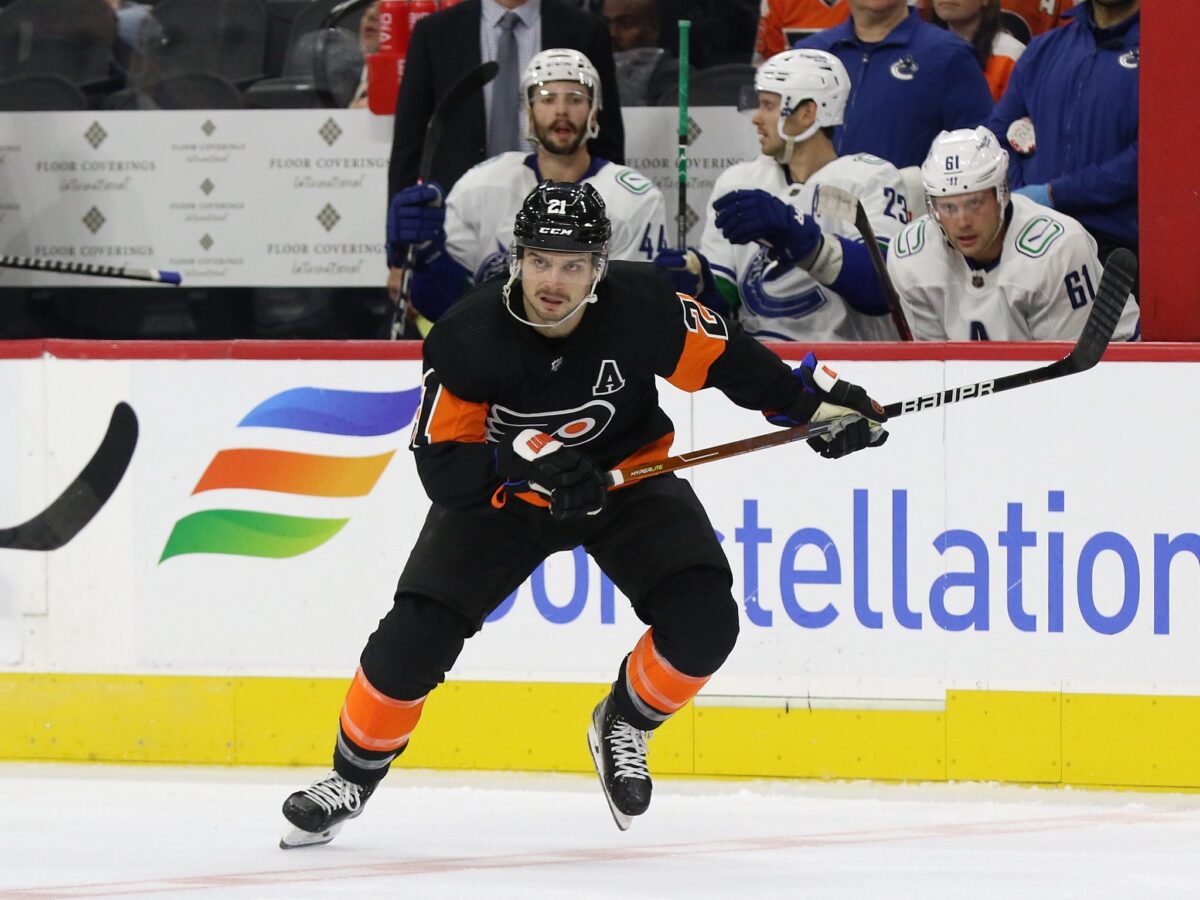Often, it’s not the teams that make the biggest trades at the trade deadline, but the right ones. Third-line, two-way forwards like Antoine Vermette (Chicago Blackhawks, 2015), Blake Coleman and Barclay Goodrow (Tampa Bay Lightning, 2021) and Artturi Lehkonen (Colorado Avalanche, 2022) were key cogs to Stanley Cup-winning teams, even though they weren’t the biggest names on the market.
Perhaps Scott Laughton could be the next player to join that list. The 29-year-old has played all 573 games in his NHL career with the Philadelphia Flyers, who drafted him 20th overall in 2012. He has been through his ups and downs, but for a solid half-decade, he’s provided largely effective play in the team’s bottom six and penalty kill.
His Flyers career may be down to its final month, though. Laughton would undoubtedly be an intriguing piece for contending teams to acquire. But it takes two to tango, meaning general manager Daniel Briere may have to make arguably the toughest decision of his first year on the job. To help him out, let’s look at Laughton — and the context around him — to determine the pros and cons of trading him away.
Pros of Trading Laughton
Even as they’ve continued their surprisingly strong season, the Flyers have been adamant that they remain in a rebuild. Rebuilding teams sell. And there are quite a few reasons to believe that now is the time for the Flyers to move Laughton.

For starters, there’s good reason to believe the Flyers could get a strong return for Laughton. The top two centers — Elias Lindholm and Sean Monahan — are off the board, with both netting a first-round pick in return. Lindholm brought back significantly more than that. While both players have higher ceilings than Laughton, there are now not a lot of centers on the market and a lot of teams looking for help down the middle. Laughton is eighth on the latest TSN Trade Bait, one of just three centers in the top 15 (Adam Henrique and Jack Roslovic are the others).
It also isn’t like Laughton has been an integral piece for the Flyers on the ice this season. His underlying numbers are his worst in any season since he became a full-time NHLer in 2017-18. After scoring a career-high 43 points last season, his offense is also down, and while a lot of that is due to a decrease in ice time, even his 5-on-5 points per 60 are slightly down from last season and significantly down from where they were before.
Even before the season began, it was fair to wonder whether Laughton was a fit for the future of the Flyers. He is the team’s fourth-oldest forward. Two of those players — Cam Atkinson (34 years old) and Nicolas Deslauriers (32 years old) — are almost certainly gone when their contracts are up in 2025 and 2026, respectively. The same could be true of Laughton, who will be 32 years old when he hits free agency in 2026.
Additionally, what was one of the biggest reasons to keep Laughton also seems now like a moot point. A lot of his value is intangible, as there’s no doubting his leadership and importance to the team’s culture. The Flyers have placed lots of emphasis on stabilizing that over the last two seasons. But with Sean Couturier and Travis Konecny being named captain and alternate captain (alongside Laughton), respectively, it’s fair to question if things have reached a point where the locker room stability he brings is no longer vital.

Finally, there’s an obvious replacement for the bottom-six Swiss Army knife role Laughton has filled for the last several seasons. Ryan Poehling is younger (24 years old, to be exact) and having a decent season. Head coach John Tortorella has shown he trusts him to play third-line center, though, like Laughton, Poehling is better off on the fourth line. He’s also cheaper than Laughton by just over $1 million and becomes an unrestricted free agent at the same time.
Cons of Trading Laughton
However, there are also points against trading Laughton, at least right now. For starters, trading him would be the definition of selling low, which is generally ill-advised. The Flyers can choose to keep him, and if he has a strong second half, potentially get more for him in the offseason. If that doesn’t happen, they can see if he rebounds in 2024-25 and move him at some point in that season if he does. You do run the risk of Laughton continuing to struggle. But given his track record and age, the odds of that seem low.
Even if Laughton doesn’t significantly raise his trade value during the rest of the season, he’s unlikely to significantly torpedo it, either. Therefore, you could argue the Flyers might as well keep him to help the team with their playoff push, then move him in the offseason. Doing so would both make the team better than trading him and minimize the negative impact on the locker room, which would likely be easier to take over an offseason.
And while Philadelphia’s locker room culture may have improved to the point where losing Laughton could be tolerated, that improvement may be a reason to not rock the boat. The Flyers can’t afford to lose those gains, and trading him (especially mid-season) would put them in jeopardy. It ultimately could be deemed a risk too big to take.
The Verdict
At some point in the near future, the Flyers should say goodbye to Laughton. Unless he totally sinks his value or teams aren’t willing to pay a fair price, it doesn’t make sense to keep a nearly 30-year-old whose upside is a good third-liner, especially since it seems like the Flyers could get at least a second-round pick in return.
Related: Revisiting the Flyers’ 2022 Trade Deadline
If the Flyers ultimately decide that they can get whatever their best offer is in March during the offseason, then there’s no rush to trade Laughton. It would be great for him to see the darkness of the last few seasons through and help the team return to the playoffs. But the Flyers have said they can’t let emotions get in the way of their plan. Deciding Laughton’s future will put that philosophy to the test.
